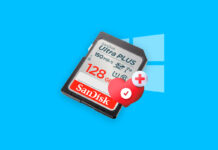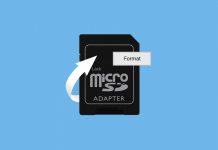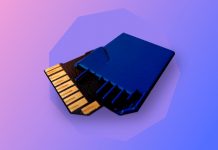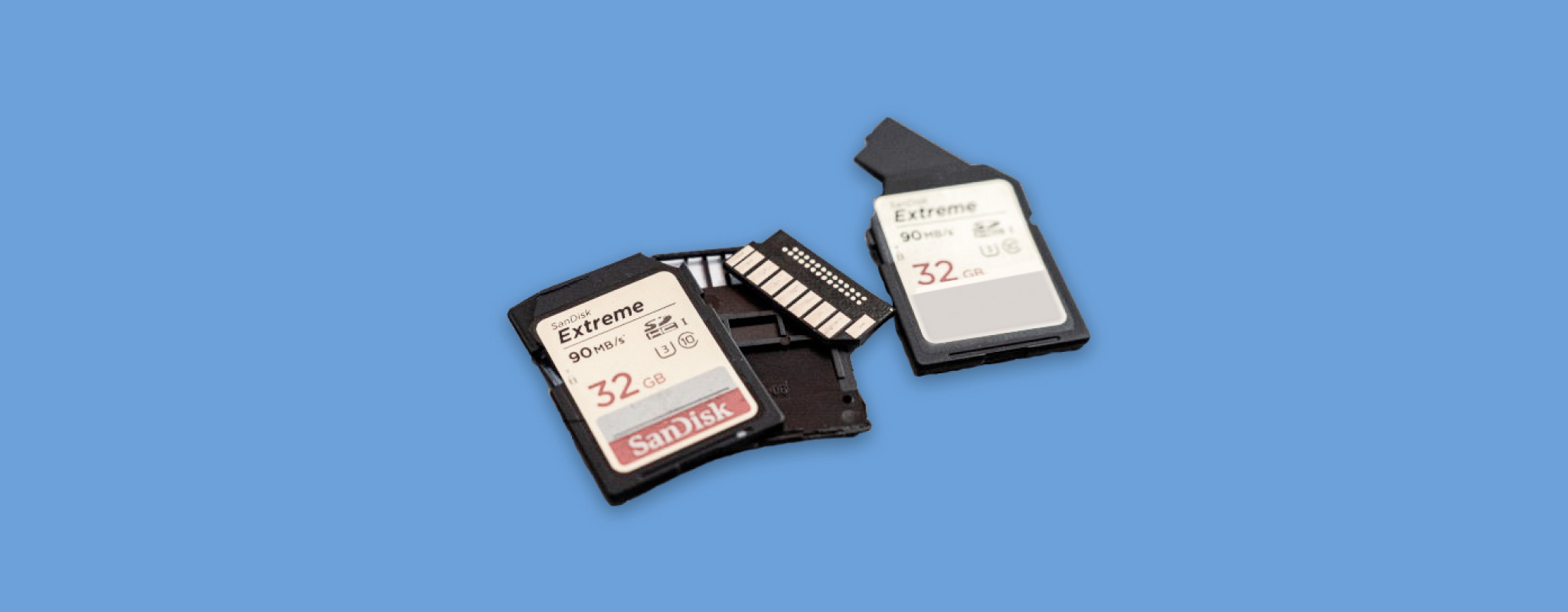 Issues with SD card corruption affect countless people every day and, in many cases, cause the loss of important files. If you’re reading this article because your SD card has become corrupted and you’re wondering how to repair the damage, then you’re in the right place because we cover multiple tried-and-tested ways to fix a corrupted SD card and recover lost data from it.
Issues with SD card corruption affect countless people every day and, in many cases, cause the loss of important files. If you’re reading this article because your SD card has become corrupted and you’re wondering how to repair the damage, then you’re in the right place because we cover multiple tried-and-tested ways to fix a corrupted SD card and recover lost data from it.
Table of Contents
What is a Corrupted SD Card?
A corrupted SD card has suffered logical damage, causing one or more files stored on it to become unreadable.
In extreme cases, SD cards that have become corrupted may not even be accessible. Such SD cards typically appear as if there were no data stored on them at all. In reality, most original files are usually still physically present and recoverable using the right techniques and software solutions.
How Do SD Cards Get Corrupted?
As we’ve already stated, SD card corruption is caused by logical damage, but what are the causes of logical damage? There are several that you should know about:
| Cause | Description |
| 🤷♂️ Human errors | The single biggest cause of logical damage are users themselves. All too often, users are too lazy to properly eject their SD card before physically removing it from the memory card reader and possibly interrupting running read/write processes. What’s more, most people don’t understand that some devices support only certain file systems, and that attempts to use an SD card with a device that doesn’t support it may result in data becoming corrupted. |
| 🦠 Malware | From common viruses to stealthy trojan horses to sinister ransomware, there are many strains of malware that can infect SD cards and corrupt data stored on them. The same goes for various shady software applications that exist just to earn their creators money without providing anything of value in return. |
| 🔋 Outages and hardware issues | Just like all storage devices, SD cards require a certain voltage to operate correctly. When this voltage can’t be reliably provided due to power outages or hardware issues, read/write operations are unlikely to finish successfully. That’s why it’s important to use brand-name SD cards and memory card readers instead of their budget no-name counterparts. |
Other reasons why corrupted SD card recovery is a hot topic include bugs in software applications resulting in logical damage, unintentional formatting and file deletion, as well as controller failures and driver problems.
How to Recover Data from a Corrupted SD Card
Let’s explore effective methods to rescue and restore your data from a corrupted SD card. Whether you’re a professional photographer, a tech enthusiast, or simply someone caught in the unfortunate situation of data loss, these strategies are designed to help you recover your valuable information without the need for immediate formatting.
Method 1: Using PC Data Recovery Software
You don’t have to be an expert to recover data from a corrupted SD card using data recovery software like Disk Drill. That’s because Disk Drill has a modern user interface that doesn’t leave you guessing which button to click next. Despite its ease of use, Disk Drill can recover over 400 file formats from all SD cards and other storage devices.
The free version of Disk Drill lets you recover up to 500 MB of data, and you can always upgrade to Disk Drill Pro to enjoy unlimited data recovery. Included with Disk Drill are handy tools that you can use to protect and organize important data, as well as monitor the health of your storage devices.
Before beginning the recovery process, it’s wise to create a byte-to-byte backup of your SD card. This backup is an exact replica of your card, preserving every bit of data, including potential recoverable files that might not be immediately visible. Fortunately, Disk Drill comes with a byte-to-byte backup tool that’s as easy to use as the rest of the application:
- Connect the SD card to your computer.

- Install Disk Drill on your main hard drive.
- Launch Disk Drill and select the Drive Backup tool at the bottom of the left pane.
- Choose your corrupted SD card and click the Byte-to-Byte Backup button in the top-right corner.

- Tell Disk Drill where it should save your backup and proceed with its creation.
Now that you have a byte-to-byte backup of your corrupted SD card, you can follow these instructions to restore data from it using Disk Drill:
- Launch Disk Drill, select the SD card, and click the Search for lost data button.

- Preview and select each file you want to recover.
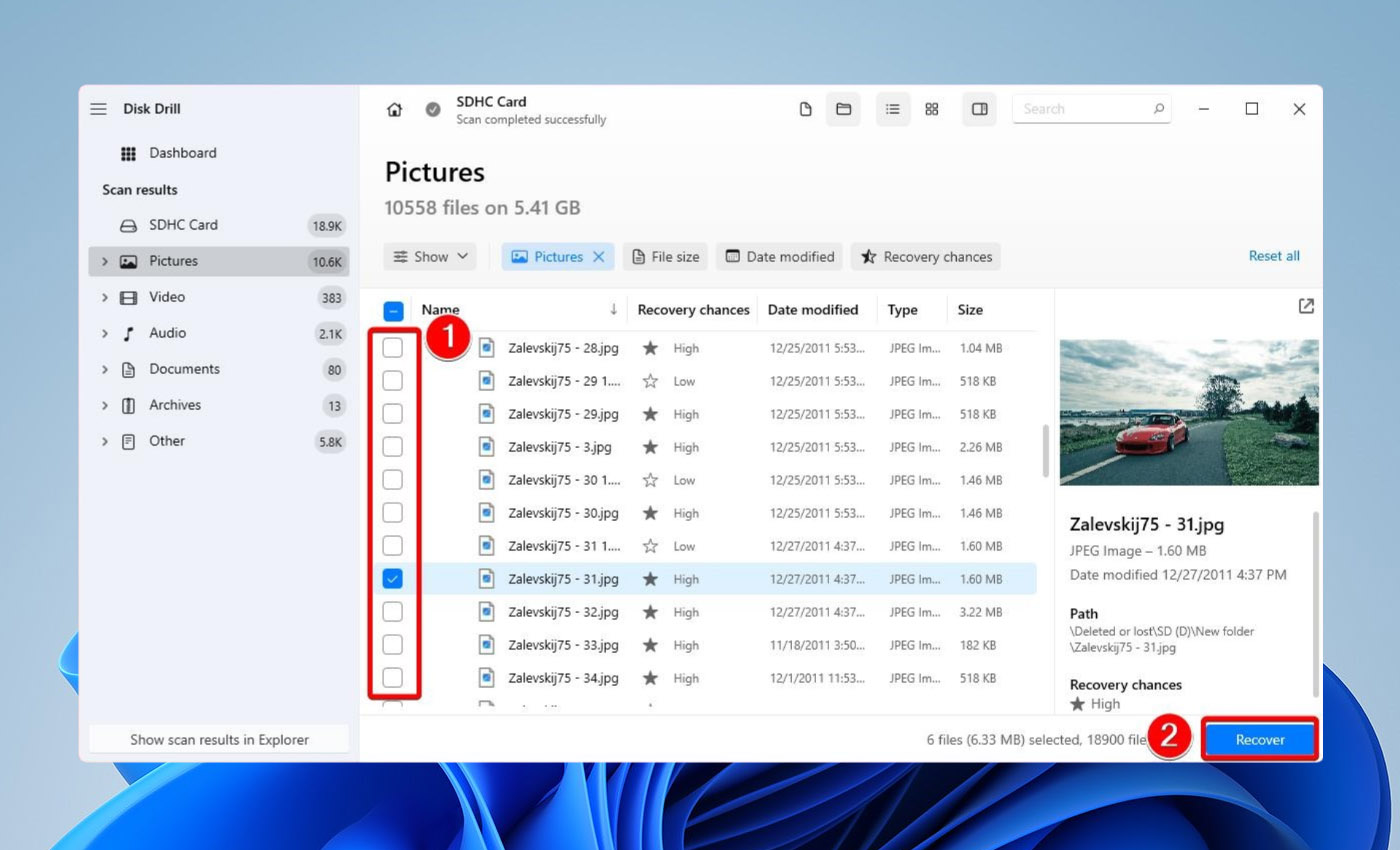
- Click Recover and choose a suitable recovery directory.
Method 2: Using Android Data Recovery App
Don’t have access to a computer capable of running Disk Drill? In that case, you can attempt to recover data from a corrupted SD card using Android data recovery software like DiskDigger. While not nearly as powerful as Disk Drill, this app for Android devices lets you recover data with a few simple taps, making it worth a try.
Just know that the free version can only recover photos and videos, and video recovery only works on rooted Android devices. The Pro version can recover other file types besides photos and videos, but, again, recovering any types of files besides photos is not possible without root.
Here’s how to recover files from a corrupted microSD card using DiskDigger:
- Install the app from the Google Play Store.

- Make sure the SD is inserted in your Android device.
- Launch DiskDigger.
- Depending on which version of the app you have, begin either Basic or Full scan.
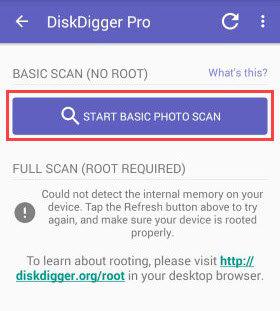
- Select all files you want to recover and transfer them to your phone.
While this method is especially handy if your Android SD card has become corrupted and important files have gone missing, you can also use it to recover data from full-size SD cards. You just need an Android smartphone that supports a suitable memory card reader.
Method 3: Pay for Professional Data Recovery
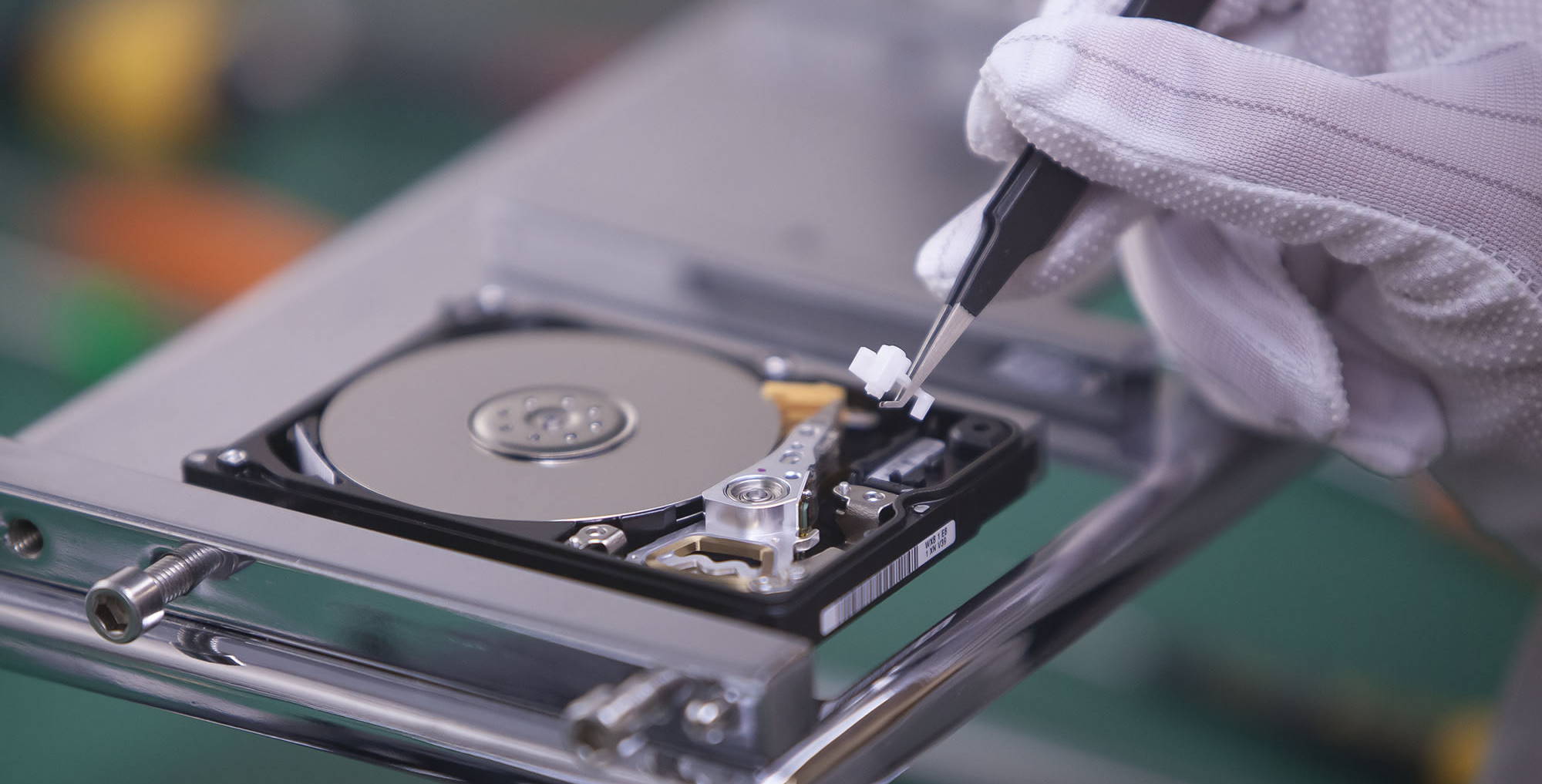
Professional data recovery is the most expensive way to recover data from a corrupted SD card, but it’s also most likely to deliver great results.
Professional data recovery centers employ experienced professionals equipped with state-of-the-art hardware tools and software applications that allow them to address even the most complicated data loss scenarios out there.
The best data recovery centers can not only repair corrupted SD cards that have been logically damaged but also recover files from corrupted SD cards that are not in top physical shape, making them well worth the price if you need to recover highly valuable data, such as irreplaceable family photos or business documents that took you weeks to put together.
How to Fix a Corrupted SD Card
In this section, we will guide you through several effective methods aimed at restoring the functionality of your SD card. D card. From simple troubleshooting steps to more advanced repair techniques, these methods are designed to help you make your SD card usable again.
Method 1: Access the SD Card from Another Device
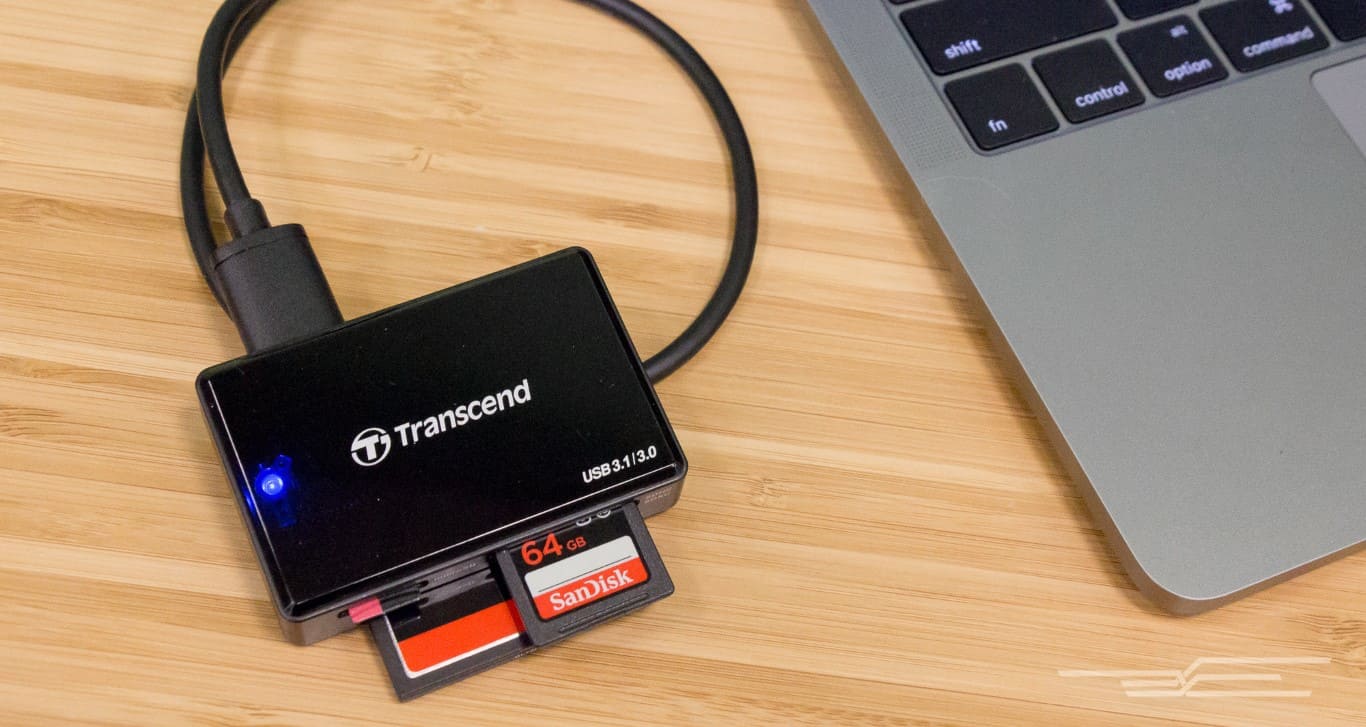
To rule out the possibility of your computer being the cause of the corruption, we recommend you start by connecting your SD card to another device. If you don’t have access to another computer, you can use a smartphone or a smart TV with an SD card slot.
If you can access the content of your SD card just fine from another device, then there’s something wrong with your computer or its memory card reader.
Again, the simplest solution is to get a new memory card reader and try again. If that doesn’t help, then you should check the integrity of your operating system because your issues could be caused by missing or faulty drivers.
Method 2: Use the CHKDSK Command to Fix File System Errors
CHKDSK is a command-line tool in Windows that you can use to check an SD card for disk errors and bad sectors and repair them if possible. Using a command-line tool to fix SD card corruption may understandably feel intimidating, but there’s really nothing to it as long as you follow our instructions:
- Open Windows Explorer and select This PC from the left panel.
- Write down the drive letter of your SD card.
- Press Windows + X and select Windows PowerShell (Admin).
- Type the following command and press Enter (replace X with the drive letter of your SD card):
chkdsk X: /r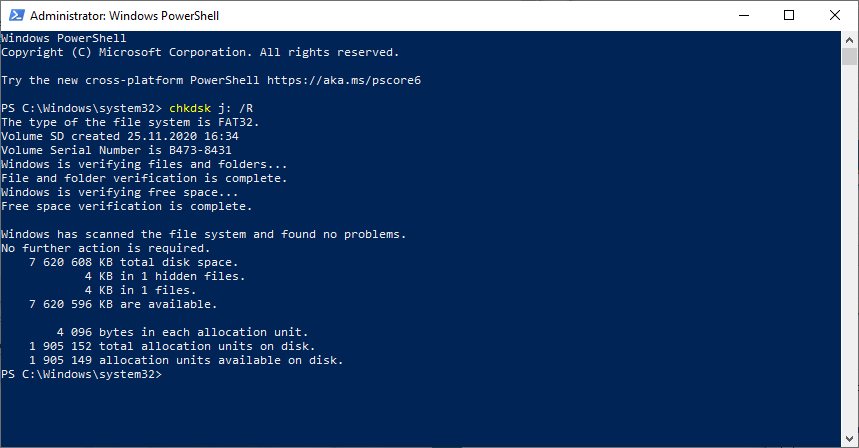
- Agree if asked whether you would like to force a dismount of the SD card.
The /r parameter tells CHKDSK to locate bad sectors and recover readable information. You can also try the /f parameter, which fixes errors but doesn’t recover readable information.
Method 3: Change the Drive Letter of the SD Card
It may seem like a strange fix for SD card corruption, but changing the drive letter can really make an unreadable SD card readable again. To do so:
- Press Windows + X and select Disk Management.
- Right-click on your SD card and select the Change Drive Letter and Paths option.
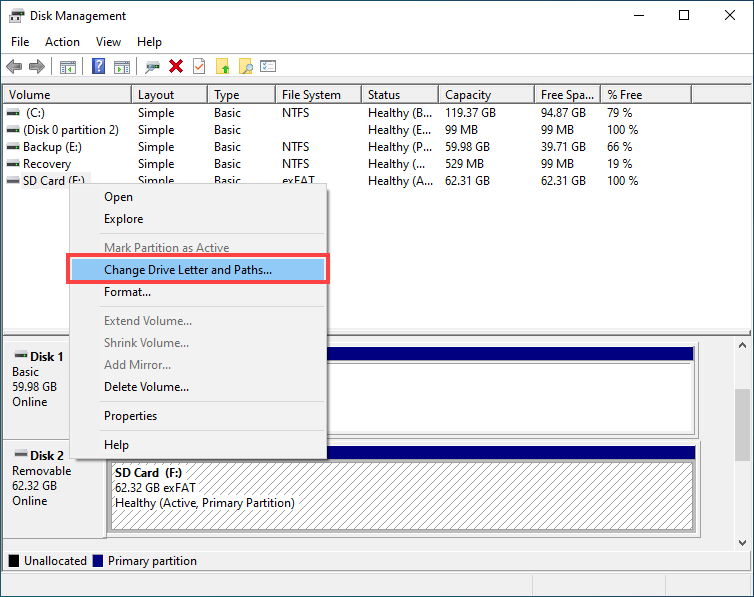
- Click Change and assign a different letter to your SD card. Click OK to confirm your choice.
Of course, if your SD card has really been corrupted, it will take more than a drive letter change to fix the corruption and restore corrupted SD card data, which is where the next method comes in.
Method 4: Repair Your SD Card Using the Windows Disk Repair Tool
Included in Windows is an easy-to-use disk repair tool that can automatically diagnose and fix common SD card issues. To repair your SD card using the Windows Disk Repair tool:
- Open Windows Explorer and select This PC from the left panel.
- Right-click on your SD card and select Properties.
- Switch to the Tools tab and select the Check option.
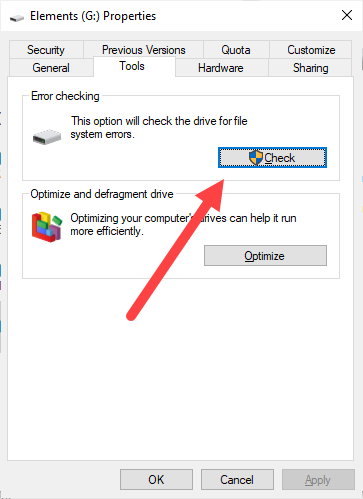
- Select Scan and repair drive even if no errors are found.
In addition to the Windows Disk Repair tool, there are various third-party software applications that make it possible to recover deleted partitions, fix damaged partition tables, and recover deleted data, among other things. The best example is TestDisk, a free and open-source data repair tool capable of addressing even extensive data corruption. Just know that TestDisk has a rather unintuitive command-line user interface. If you prefer GUI, you can use a data recovery application like Disk Drill, which we describe in the next chapter.
Method 5: Recreate the File System by Formatting the SD Card
If you don’t care about the data stored on your SD card, and you just want to fix the corruption that’s preventing you from using it, you can recreate the file system by performing a quick format using the built-in format tool in Windows:
- Open Windows Explorer and select This PC from the left panel.
- Right-click on your SD card and select the Format option.
- Select the Quick Format option and click Start.
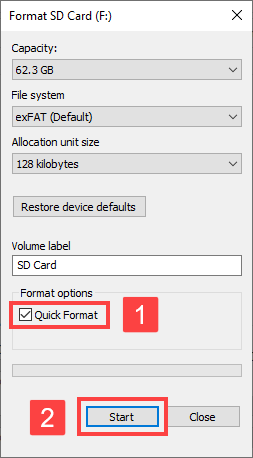
The best file systems for SD cards are FAT32 and exFAT. The former is supported by the vast majority of devices that accept SD cards, while the latter can store extremely large files, which comes in handy when recording high-resolution videos.
Method 6: Reinstall Your SD Card Reader Driver
It’s possible that your SD card is completely fine and that your SD card reader is to blame for the problems you have with accessing your data. In many cases, all you need to do to restore your SD card reader to a working condition is reinstall its driver:
- Press Windows + X and select Device Manager.
- Connect your SD card reader to your computer.
- Double-click Disk drives and right-click on your SD card reader.
- Select the Uninstall device option and click Uninstall again to confirm your choice.

- Disconnect your SD card reader and restart your computer.
- Reconnect your SD card reader and wait for your computer to reinstall the relevant drive.
It’s also possible that your memory card reader requires a special driver Windows isn’t aware of. To check if that’s really the case, ask the manufacturer.
Method 7: Check if the SD Card is Legit
There are surprisingly many fake SD cards sold on sites like Amazon and AliExpress. Such SD cards promise a large storage capacity but deliver only a small fraction of it. Because fake SD cards are programmed to display a different storage capacity than the one they actually offer, your device won’t be able to use the card correctly, so data corruption may occur.
To check if your SD card is legit, you can use a free tool such as FakeFlashTest, which works by writing large random files to the free space and then verifying their integrity. When the tool encounters a file whose integrity has been compromised, you know that’s where the real storage capacity ends.
- Download and launch the tool.
- Select your SD card and click the Quick Size Test button (make sure there are no important data on the SD card because they will be erased).
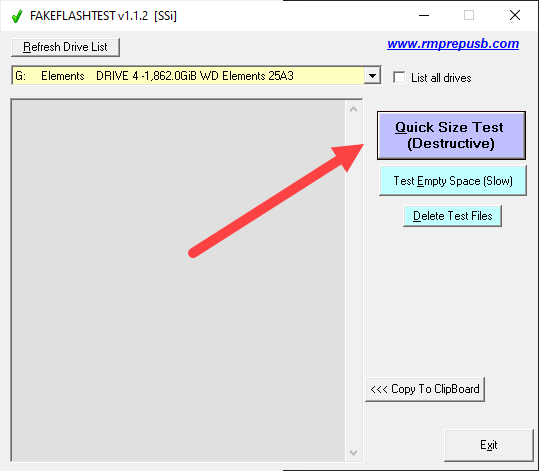
- Wait for FakeFlashTest to determine the true capacity of the SD card.
While it’s possible to use a fake SD card, we strongly recommend you avoid doing so because the risk of data corruption is simply too high. In extreme cases, the SD card could even become dead, and it’s not always possible to recover a dead SD card.
Method 8: Create a Partition on the RAW SD Card
If your SD card has become so corrupted that it now has no file system (=is RAW), then you need to create a new partition on it to be able to use it again. Just know that this method involves re-partitioning and formatting the card, which can restore its functionality but can make the recovery of lost data more difficult. Therefore, it’s critical to attempt data recovery before proceeding with this fix.
If you’ve already recovered as much important data from the SD card as possible, then you can proceed with creating a new partition on your RAW SD card:
- Press Windows + X and select Disk Management.
- Locate the RAW SD card and right-click on the unallocated space.
- Select the New Simple Volume option.
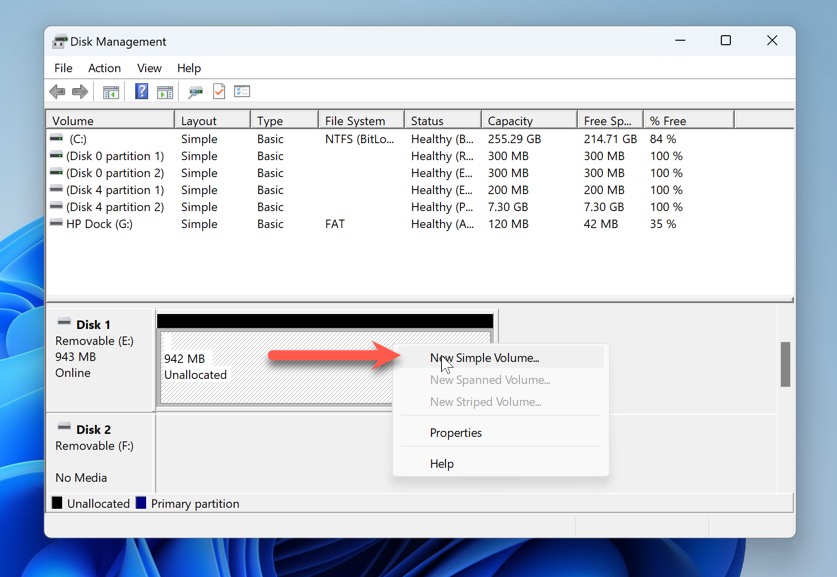
- Go through the partition creation wizard. When asked to select your desired file system, choose FAT32 or exFAT (if your SD card is larger than 32 GB).

- Click Finish to close the partition creation wizard.
Conclusion
Any encounter with SD card corruption can be daunting because there’s so much at stake—your digital memories, important business documents, or perhaps the keys to your cryptocurrency fortune. But as we have explored, there are multiple methods to tackle this issue effectively. Just remember to create a complete byte-to-byte backup of your entire corrupted SD card first, and you should be able to solve the problem at home.
